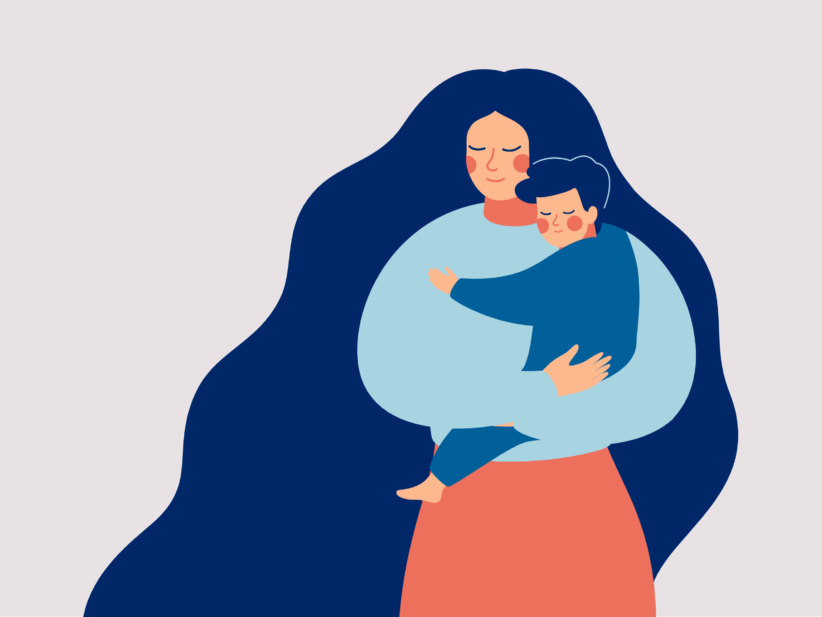Here is a typical child’s opinion of ice cream: I want it. I want it, because I see it. I want it when I don’t see it, too. I want it now, and I want more in 10 minutes. Ice cream is good for breakfast and even better for lunch or dinner.
Depending on your child, the same can be said about video games. Or maybe staying up late. Or not sharing. Or lots and lots of other choices and behaviors that, in the end, just aren’t good for them.
Fostering emotional attachment is not an excuse for a child to rule the house. Children are not born with innate self-control; they cultivate this skill. They are impulsive by nature and have no time window linking choices made now to the future. They also do not possess the full ability to defer gratification: Ice cream tastes good. Why not eat it all the time?
A parent’s job is to teach through limits while modeling healthy ways to deal with any frustrations that come up in response. When enforced in a positive, loving manner, these limits build self-regulatory skills that foster brain development. Setting clear, understandable boundaries does not need to feel punitive. Through limits, children develop patience and an ability to regulate emotions. Reasonable limits increase the likelihood that children will manage challenges well and live a happy life as an adult.
Here’s how young children learn behaviorally, in a nutshell: Something happens, whatever happens next makes it either more or less likely that behavior is repeated. Discussion with children fosters communication and explains our perspective, but acute behavioral management stems from immediate feedback. That’s the reality of executive function — the developmental path related to self-management skills — for even the brightest child often all the way into young adulthood.
Discussion is discussion, and discipline is discipline — they aren’t the same. Discussion represents a long-term path to collaboration and emotional understanding. “It’s disrespectful to hit me, please don’t do it again.” You explain the “why” of your choices after the fact. Over the years, you share your ideas about how to live. With teens, when possible, you collaborate in decisions while offering more independence. Even at that age, a serious talk isn’t always useful discipline. Influencing behavior today means tying whatever happened now to whatever happens next.
Without the benefit of executive function, young kids cannot fully tie now to the past or future. “Wait until mommy comes home” doesn’t change behavior in a 4-year-old. He may seem upset when the punishment finally happens, but it doesn’t tie concretely to his earlier misbehavior. Conversely, from elementary school through high school, any student enjoys hearing in the moment, “Great job studying so hard for that test.”
Discipline does not only relate to misbehavior or a tantrum, it’s a way of modeling healthy relationships. It teaches children to set boundaries on their own behavior, to use language to express anger, and to feel comfortable with intense feelings. When you’re compassionate and calm while maintaining appropriate limits, you embody traits your children will, hopefully, emulate themselves.
As close as you may be with your child, you are a parent, not a friend. Adults make decisions, some of which children may not understand. Even when kids have a real reason to complain, you should be treated with respect. You make the rules, you uphold them, and that’s how children learn.
Respond calmly, redirect, but don’t give in. It’s okay to be upset, but not to act like that. It is normal for toddlers and young children to test boundaries, to get frustrated, or to cry. Ignore whining, tantrums, and similar behaviors, and they disappear quicker — and you’ve reinforced a message about managing emotions, too.
Young brains don’t necessarily understand “why” a behavior is wrong. A child hitting or not treating other kids with respect needs prompt, consistent discipline, limits, or alternatively rewarding the opposite, appropriate behavior. Reasoning or rationalization isn’t enough — kids don’t stop speaking nasty to peers in the short run because someone explains it makes someone else feel bad. They gradually learn from discussion over the years, and open conversation over the years shares your perspective and beliefs about how to live well. Discipline, though, remains immediate.
Consider these five practical tips about setting limits and discipline:
1. Steer behavior through immediate feedback. Seek a balance between lovingly meeting a child’s needs, but firmly saying “no” when appropriate. “That was great, nice job listening.” “That wasn’t okay at all, please go sit in time out.” Use verbal feedback to keep kids on track; praise them just before they get distracted or upset and you help them hold themselves together. Whenever possible, pause and insist your child respectfully ask for what she wants, even if you’ve already decided to say “yes.”
2. Create opportunities for children to be in control, make choices, explore, and be creative. Creating two acceptable choices allows children to feel a sense of control, but still gets you, the parent, what you need. “Do you want to come inside now or in five minutes?” feels a lot better than “get inside this instant!” Especially in younger children, that diversion may be enough to “enforce” your decision.
3. Avoid empty demands. Limit the number of rules when you can, but enforce the ones you choose. If you bend the rules every time your children fuss, it makes sense for them to kick and scream. If they gain 20 more minutes of play while waiting you out, they’ll continue playing. Wouldn’t you do the same? Children will learn that what you say and what you mean are two different things.
4. Remain empathetic but firm. Most infants, toddlers, and young children have not yet learned how to express themselves emotionally. They may really, really want to stay downstairs two hours past bedtime, and get really, really upset when told to go to bed. Getting upset is normal, healthy even, while learning to manage emotions and frustration. Tell them, “I know you don’t want to leave, but we can play again tomorrow; now it’s time for sleep.” As long as your child is happy and living in a home full of affection and positive feedback, you are not doing anything wrong if sometimes he gets upset.
5. Model remaining calm yourself. Show children an appropriate way to respond when frustrated and how to recover when you have a bad moment yourself. Habitual yelling teaches children that yelling is the best response during confrontation; it comes back at you one day. Don’t expect perfection of yourself, but do your best and reconnect with honesty about your own behavior (“I wish I hadn’t lost my cool, let’s talk about what happened”) when you feel the need.
Dr. Mark Bertin is a pediatrician, author, professor, and mindfulness teacher specializing in neurodevelopmental behavioral pediatrics. He’s a regular contributor to Mindf
Dr. Bertin will be giving a talk at the Manhattan JCC on Tuesday, June 5. For more, visit devel
Modeling good behavior
A structured behavioral plan will help you stay calm when children push back. It’s like the ABC model for adults:
1. First, there’s a trigger — your child misbehaves.
2. Instead of falling back on habitual behavior (I yell to control a situation, or I shut down and give up), you have a mental checklist to manage the situation (I’m going to remind her about the reward system, and then fall back on a time-out if that fails).
3. The consequence leads to a calmer household and well-behaved children — a reinforcement of your own behavior.






















